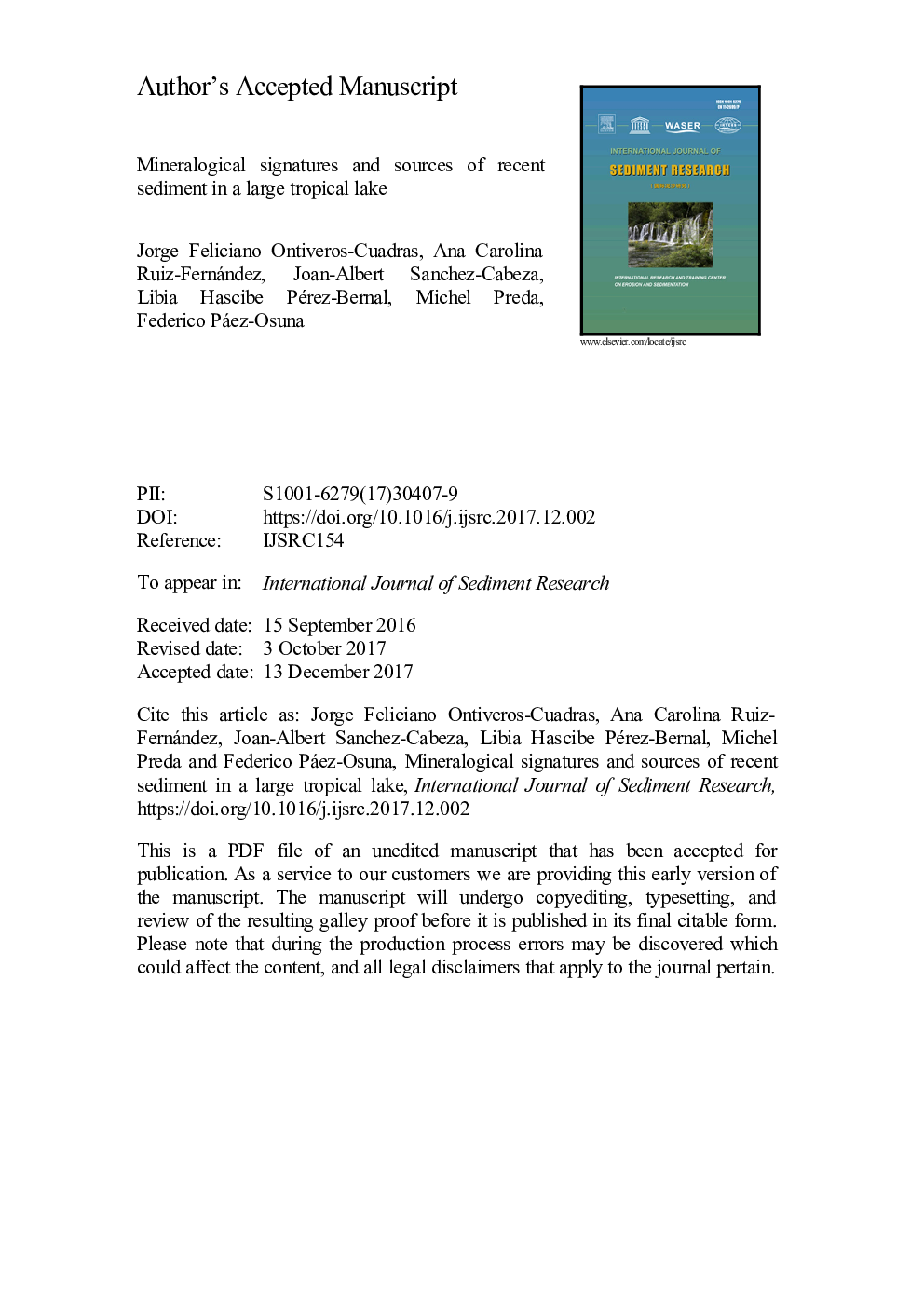| Article ID | Journal | Published Year | Pages | File Type |
|---|---|---|---|---|
| 8911090 | International Journal of Sediment Research | 2018 | 27 Pages |
Abstract
Two lead-210 (210Pb) dated sediment cores from Chapala Lake were studied to identify the mineral composition of the sediments and to discuss its relation with trace metals. Minerals and trace metals reflected the domain of volcanic rocks (i.e. basalts, rhyolite and andesite) that characterize Chapala Lake and the Lerma River watershed. Redundancy analyses (RDA) were used to identify the sedimentary variables (magnetic susceptibility, organic matter, sand content, and mineral composition) that could be related to elemental composition. Despite the distance between the two cores (7.3Â km) and hydrodynamic circulation the RDA showed that the main mechanism that controls the input of mineral species, and, therefore, element distributions in the lacustrine sediment of Chapala Lake, is related to the weathering of volcanic rocks in the Lerma-Chapala watershed, the consequent runoff and transport of fine grained catchment materials, and later in-lake processes. These findings highlight the importance of controlling watershed erosion to contribute to the improvement of the environmental quality of the lake.
Related Topics
Physical Sciences and Engineering
Earth and Planetary Sciences
Geochemistry and Petrology
Authors
Jorge Feliciano Ontiveros-Cuadras, Ana Carolina Ruiz-Fernández, Joan-Albert Sanchez-Cabeza, Libia Hascibe Pérez-Bernal, Michel Preda, Federico Páez-Osuna,
